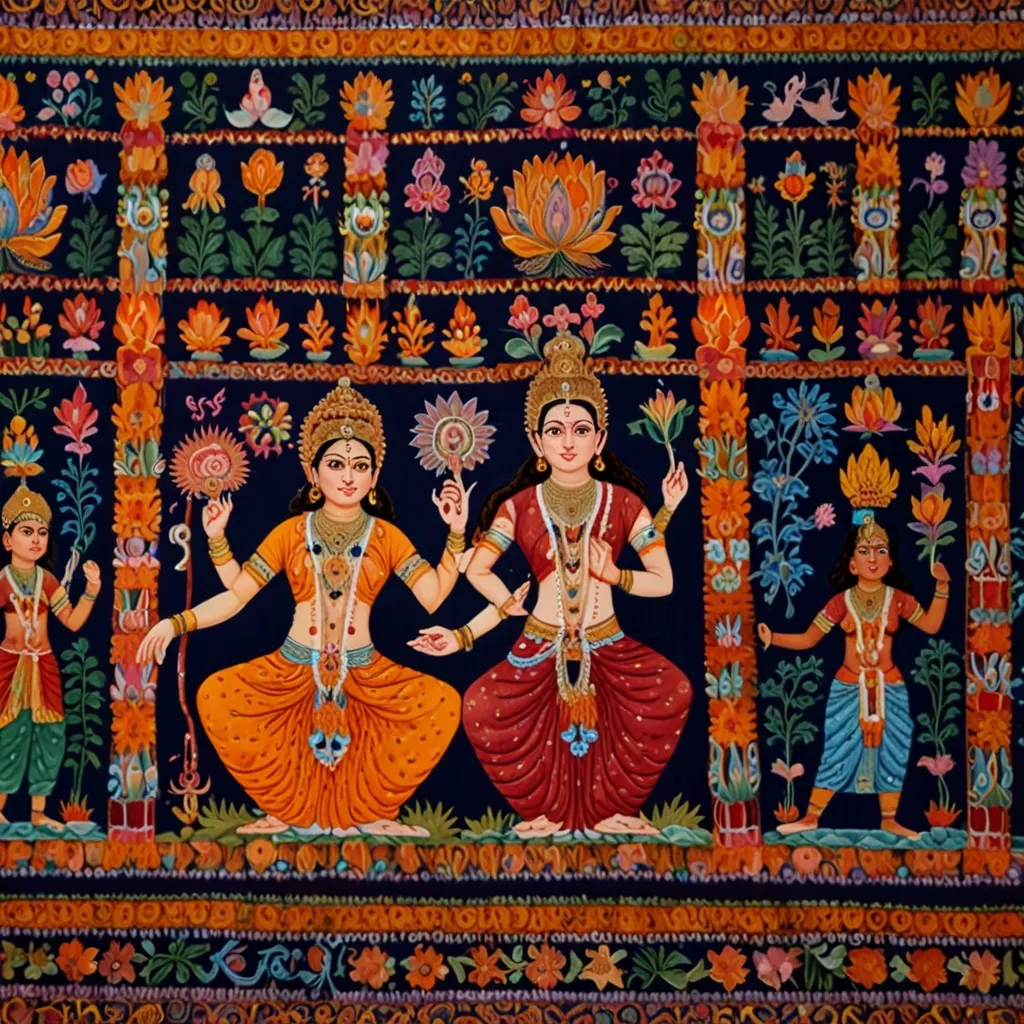In the heart of Hinduism, particularly within the Vedic traditions, lies the profound ritual of Yajna. This practice has been a cornerstone of spiritual and social life for millennia. The term “Yajna” comes from the Sanskrit root “yaj,” meaning “to worship,” and it covers a wide range of rituals and ceremonies central to Vedic worship.
Yajna is more than just a ritual. It’s a way of connecting with the divine and the universe. It involves invoking deities through fire, specifically Agni, the fire god. This sacred fire acts as a bridge between humans and the celestial realms, allowing people to offer oblations and prayers to the gods. The first word of the Rig Veda, “Agni,” shows just how significant fire is in these rituals.
There are many types of Yajnas, each with its own purpose and significance. Every day Yajnas can be simple, like offering food or ghee to the fire. Mythological Yajnas are grand ceremonies often tied to ancient legends. One of the most famous and complex Yajnas is the Ashwamedha Yajna, involving the sacrifice of a horse. Historically, this ritual symbolized the power and sovereignty of a king. Today, it’s often reinterpreted more symbolically, using plant-based offerings instead of actual sacrifices.
At the heart of Yajna is the principle of give and receive. This reciprocity is fundamental to the ritual. Offerings are made to the gods in exchange for blessings and prosperity. Giving isn’t just about material offerings; it’s also about spiritual growth and self-realization. Lord Krishna in the Bhagavad Gita says, “I am the Yajna,” highlighting that the act of sacrifice itself is divine.
The performance of Yajna involves several steps and rituals. It begins with preparing the sacred fire and invoking deities through Vedic mantras. Participants must stick to certain rules, like maintaining celibacy, fasting, and wearing clean clothes. There are specific ways to make offerings, such as using the middle finger and thumb to drop oblations into the fire.
Yajnas are more than spiritual practices; they also have significant environmental and social benefits. The rituals often use natural materials like ghee, milk, and grains, which are offered to the fire. This process is believed to purify the environment and promote ecological balance. Socially, Yajnas are communal activities that bring people together, fostering unity and harmony.
For householders, there are five major Yajnas known as Panch Maha-Yajnas. These include offerings to all living beings, hospitality to guests, offerings to ancestors, worship of the gods, and recitation of the Veda. These rituals are essential for maintaining balance and harmony in life.
Yajnas are rooted in the theological context of Vedic society, which emphasized the importance of rituals as a means to salvation. Earlier Vedic texts focus on rituals for material rewards, while later texts emphasize spiritual realization. While Yajnas are often associated with spiritual growth, they also promise material prosperity. In Vedic times, rituals like Rajasuya, Vajapeya, and Ashvamedha were performed by monarchs to attain sovereignty and wealth. These rituals were believed to secure worldly gains like wealth, food, cattle, and long life, along with heavenly rewards.
Priests played a crucial role in performing Yajnas in Vedic society. They were highly revered for their knowledge and expertise in conducting these rituals. Seven main priests were involved in these ceremonies: Hotri, Potri, Nestri, Agnidh, Prashasiri, Adhvaryu, and Brahman.
In contemporary times, Yajnas have evolved. Many ancient practices have been reinterpreted. For example, the Ashwamedha Yajna, which historically involved the sacrifice of a horse, is now performed symbolically. This shift reflects a broader trend towards vegetarianism and a more symbolic understanding of these rituals.
Yajnas continue to be an integral part of Hindu life, serving as a bridge between the divine and human realms. They are not just rituals but a way of life that promotes spiritual growth, social unity, and environmental harmony. This practice that has endured for millennia remains a powerful and meaningful tradition in Hinduism.
Yajna is something truly fascinating. It’s amazing how a practice so ancient can still find relevance in today’s world, adapting to modern sensibilities while still holding on to its core essence. The depth of its meaning, the intricate rituals, and the sense of community it fosters make Yajna a unique and enduring tradition. Whether it’s the simple act of offering food to a fire or the grand ceremonies associated with mythological stories, Yajna connects people to their spirituality, their community, and the natural world around them.
The variety in Yajnas, from everyday rituals to the grand Ashwamedha, highlights the flexibility and depth of this tradition. It shows that whether you’re looking for spiritual growth, material prosperity, or a way to bring people together, there’s a Yajna for that. And the principle of give and receive at the heart of Yajna is something we can all relate to. It’s about understanding that what we put into the world comes back to us, spiritually and materially.
The role of priests in Yajna is also fascinating. These individuals dedicated their lives to understanding and performing these complex rituals. Their knowledge and expertise were critical in ensuring the rituals were performed correctly, adhering to the intricate details outlined in the Vedic texts. Even today, priests continue to play an essential role in conducting these rituals, though the practices have evolved and adapted to modern contexts.
One of the most intriguing aspects of Yajna is its environmental and social implications. In a world where ecological balance and social harmony are more crucial than ever, Yajna offers a way to contribute positively. The use of natural materials and the communal nature of the rituals serve as a reminder that spirituality and environmental consciousness can go hand in hand.
The Panch Maha-Yajnas for householders emphasize that Yajna isn’t just about grand ceremonies or complex rituals. It’s also about the simple, everyday acts of kindness and hospitality that maintain balance and harmony in life. These rituals remind us that spirituality isn’t confined to grand gestures but is also found in the small, daily acts of kindness and generosity.
Yajna has also adapted to contemporary sensibilities, particularly concerning animal sacrifice. The symbolic reinterpretation of rituals like the Ashwamedha Yajna reflects a broader trend towards more humane and environmentally friendly practices. This evolution shows that while the core essence of Yajna remains unchanged, it is flexible enough to adapt to the values and beliefs of modern society.
In essence, Yajna is a beautiful amalgamation of spirituality, community, and nature. It serves as a reminder that true spirituality encompasses all aspects of life, from our relationships with others to our connection with the natural world. Whether you’re participating in a simple daily ritual or witnessing a grand ceremony, Yajna offers an experience that is both deeply personal and profoundly communal.
As Yajnas continue to evolve and adapt, they remain a testament to the enduring power of spiritual practices that have stood the test of time. They offer a unique way to navigate the complexities of modern life, providing a sense of purpose, community, and connection to something greater than ourselves. In a world that often feels disconnected and fragmented, Yajna serves as a reminder of the deep, enduring connections that bind us all together.





